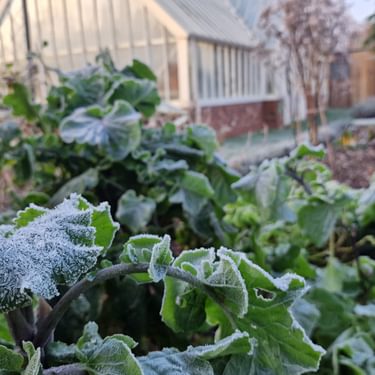
Kale
| Growing calendar | |
|---|---|
| Sow indoors | Mar-May |
| Sow outdoors | Mar-June |
| Plant out/transplant | Apr-Jun |
| Harvest | Oct-Mar |
Choose a range of kale varieties and you can grow frilly, ruffled and even rabbit-ear leaves from green through to purple. Grow several plants in rows and you can be picking leaves over a long period.
How to grow kale
Sow kale seed 1cm deep in pots indoors, or straight into the seedbed. Transplant kale seedlings when they are 10cm tall, with five or six adult leaves, spacing 45cm apart.
Plant the kale seedlings deep so the bottom leaves touch the soil, firming the soil down well. They like a well-drained, rich soil in sun, but they will tolerate shade.
Water in dry weather and mulch with well-rotted compost to conserve moisture.
Harvesting and using kale
Cut young kale leaves regularly when they're about 10am long as older leaves can turn bitter when cooked.
Snap-off fleshy side shoots from February.
Tips on growing kale
- Like most brassicas, kale is popular with slugs and caterpillars so be sure to add some protection from slugs and cover with netting.
- Stake plants and pull soil around the stems (earth up) for support on windy sites.

| Growing notes | |
|---|---|
| Difficulty | Moderate |
| Germination time | 7-12 days |
| Average time to harvest | From 30 weeks |
| Equipment needed | Stakes, twine, netting |
| Average plant size | 90cm tall, 60cm wide |
| Family group to grow with | Brassica: e.g. broccoli, rocket |
| Key nutritional content | Vitamin C, folate |
| Seed saving notes | Biennial, needs isolation |